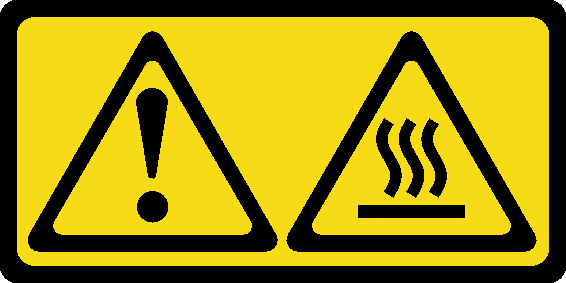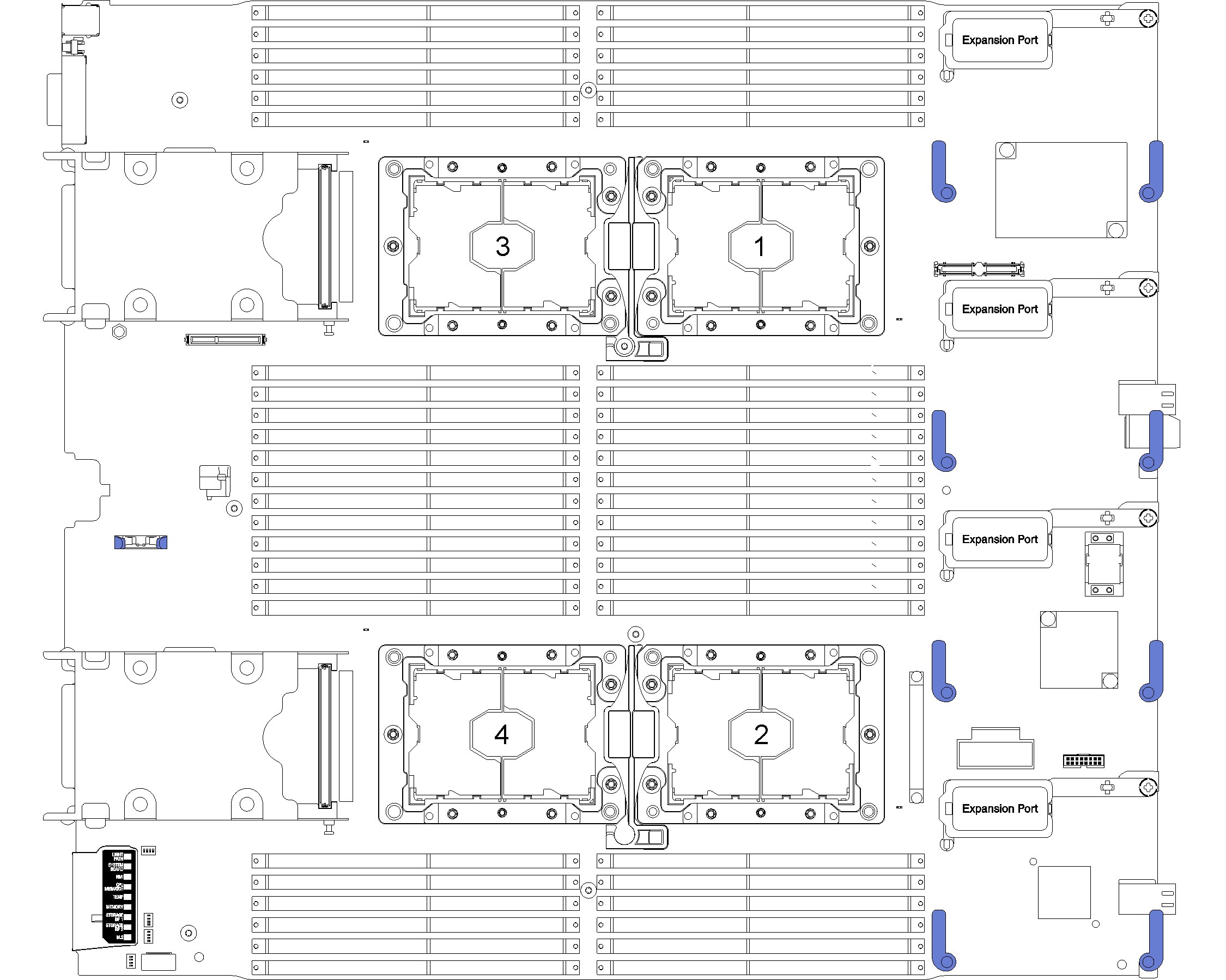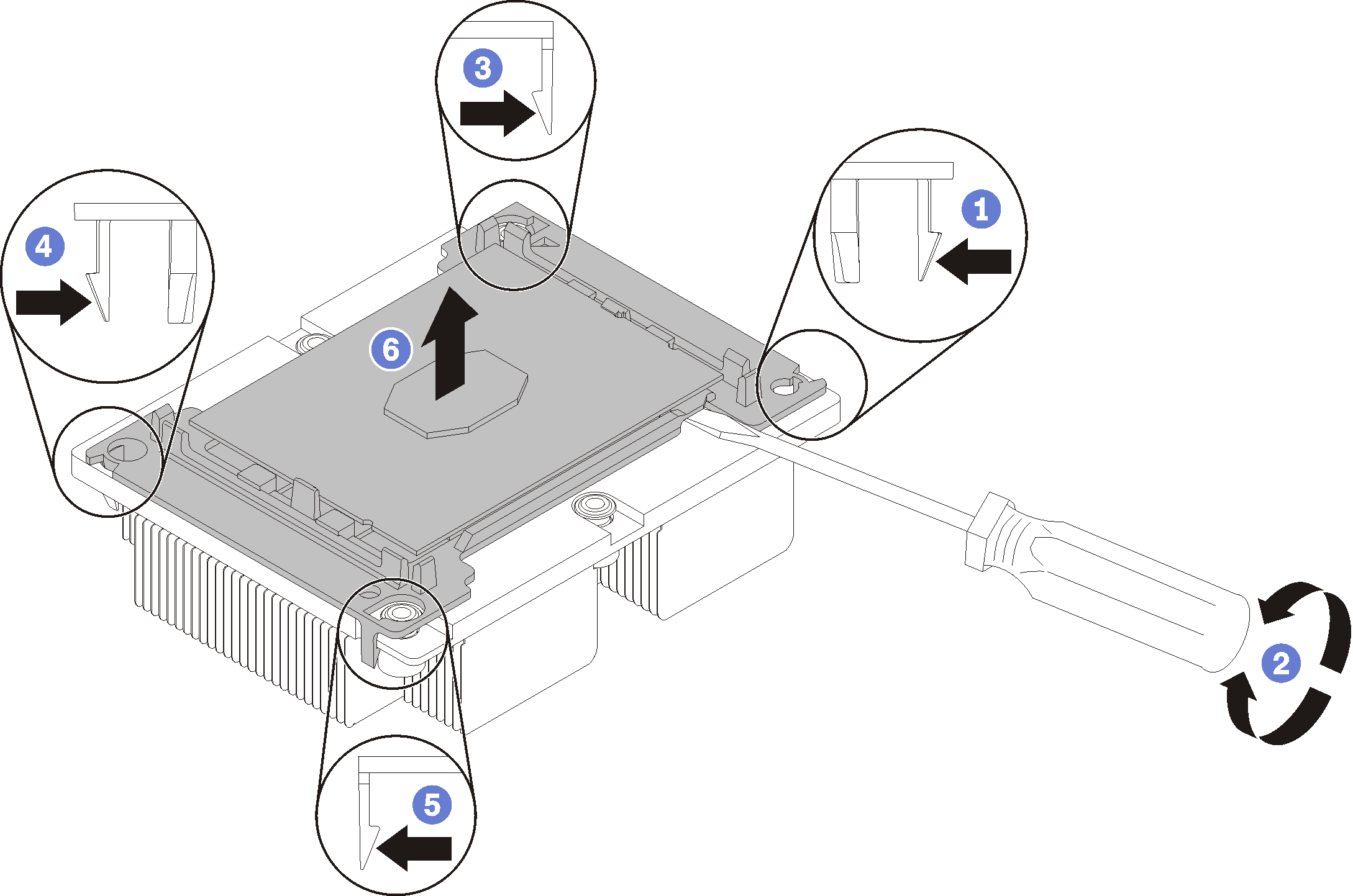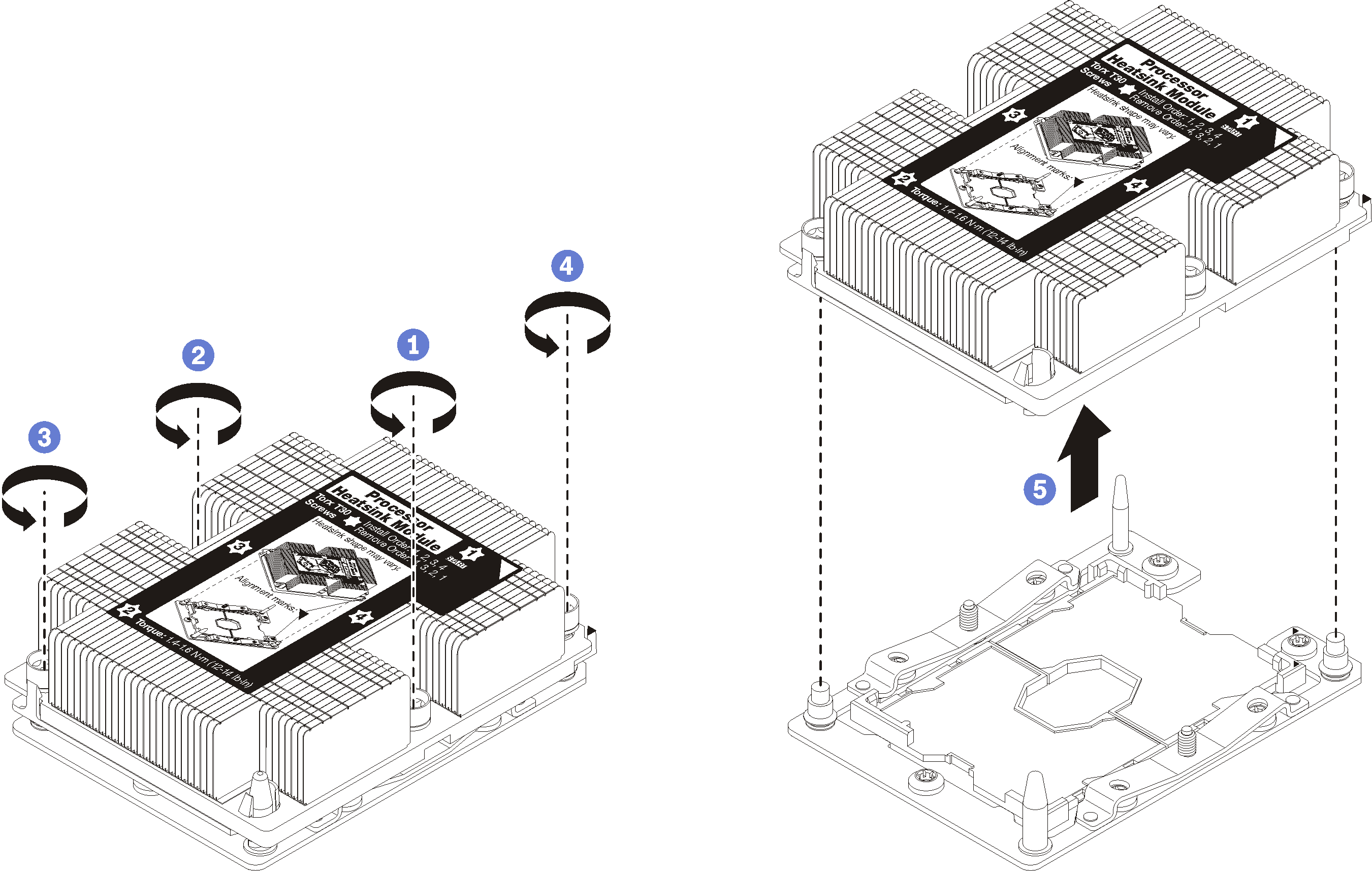Remove a processor and heat sink
Processors are in the compute system boards that are accessed from the front of the server. This task has instructions for removing an assembled processor and heat sink, known as a processor-heat-sink module (PHM), a processor, and a heat sink. All of these tasks require a Torx T30 driver.
To avoid possible danger, read and follow the following safety information.

Each processor socket must always contain a cover or a PHM. When removing or installing a PHM, protect empty processor sockets with a cover.
Do not touch the processor socket or processor contacts. Processor-socket contacts are very fragile and easily damaged. Contaminants on the processor contacts, such as oil from your skin, can cause connection failures.
Remove and install only one PHM at a time. If the system board supports multiple processors, install the PHMs starting with the first processor socket.
Do not allow the thermal grease on the processor or heat sink to come in contact with anything. Contact with any surface can compromise the thermal grease, rendering it ineffective. Thermal grease can damage components, such as electrical connectors in the processor socket. Do not remove the grease cover from a heat sink until you are instructed to do so.
To ensure the best performance, check the manufacturing date on the new heat sink and make sure it does not exceed two years. Otherwise, wipe off the existing thermal grease and apply the new grease onto it for optimal thermal performance.
Processors are static-sensitive components, handle them with extra care. See Handling static-sensitive devices for more information.
Read Installation Guidelines to ensure that you work safely.
Power off the compute node (see Power off the compute node for instructions).
If the compute node is installed in a chassis, remove it (see Remove a compute node for instructions).
Carefully lay the compute node on a flat, static-protective surface.
Remove the compute node cover (see Remove the compute node cover for instructions).

To remove a PHM, complete the following steps:
After you remove a PHM, complete the following steps:
If you are removing the PHM as part of a system board replacement, set the PHM aside.
If you are replacing the processor or heat sink, separate the processor and its retainer from the heat sink.
Figure 3. Separating a heat sink from a processor
Press the retaining clip at the corner of the processor retainer closest to the pry point; then, gently pry this corner of the retainer away from the heat sink with a flat-bladed screwdriver, using a twisting motion to break the processor-to-heat-sink seal.
Release the remaining retaining clips and lift the processor and retainer from the heat sink.
After separating the processor and retainer from the heat sink, hold the processor and retainer with the thermal-grease side down and the processor-contact side up to prevent the processor from falling out of the retainer.
NoteThe processor retainer will be removed and discarded in a later step and replaced with a new one.
If you are replacing the processor, you will be reusing the heat sink. Wipe the thermal grease from the bottom of the heat sink using an alcohol cleaning pad.
If you are replacing the heat sink, you will be reusing the processor. Wipe the thermal grease from the top of the processor using an alcohol cleaning pad.
If you are instructed to return the processor or heat sink, follow all packaging instructions and use any packaging materials that are provided.
Demo video
